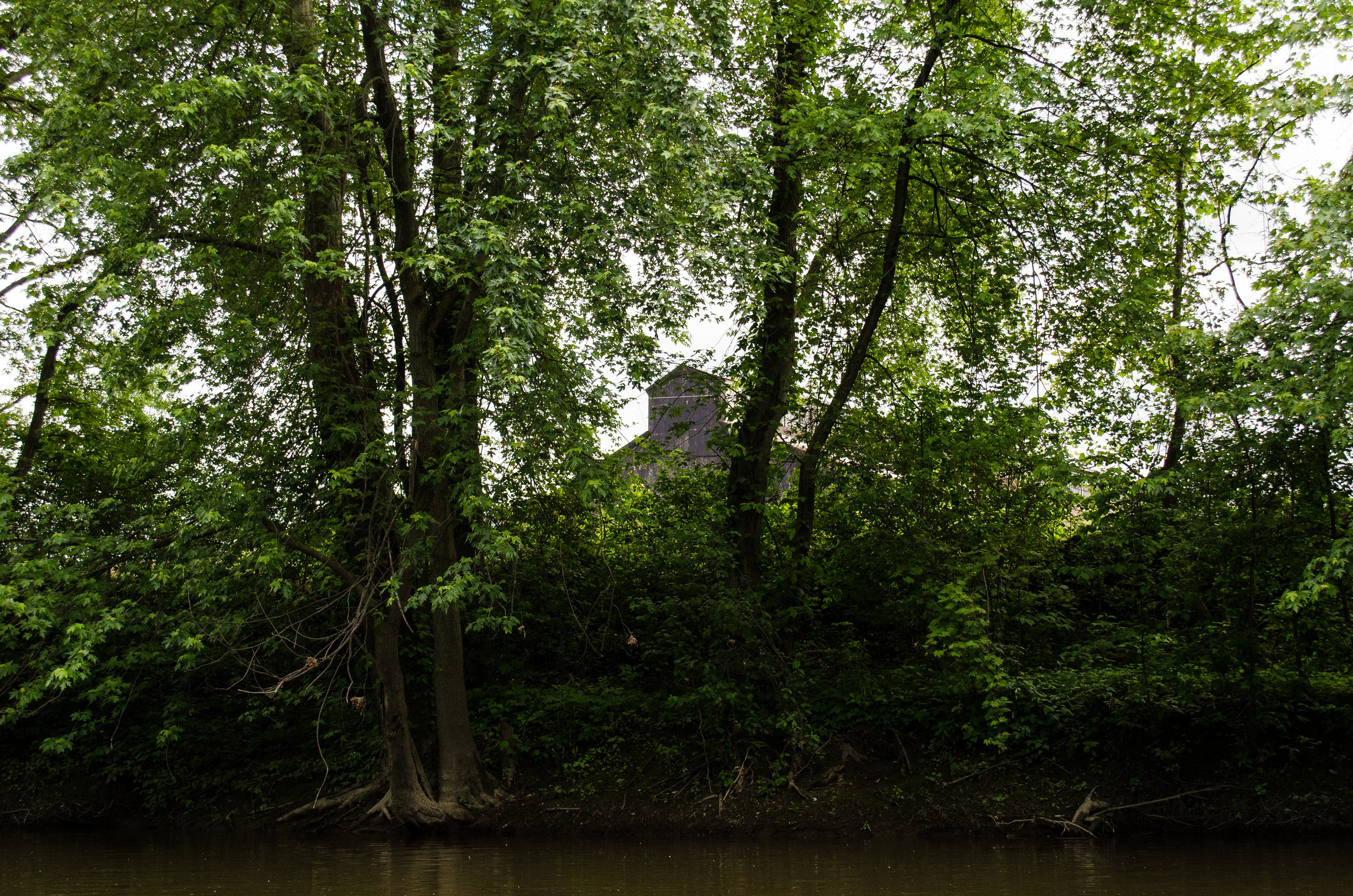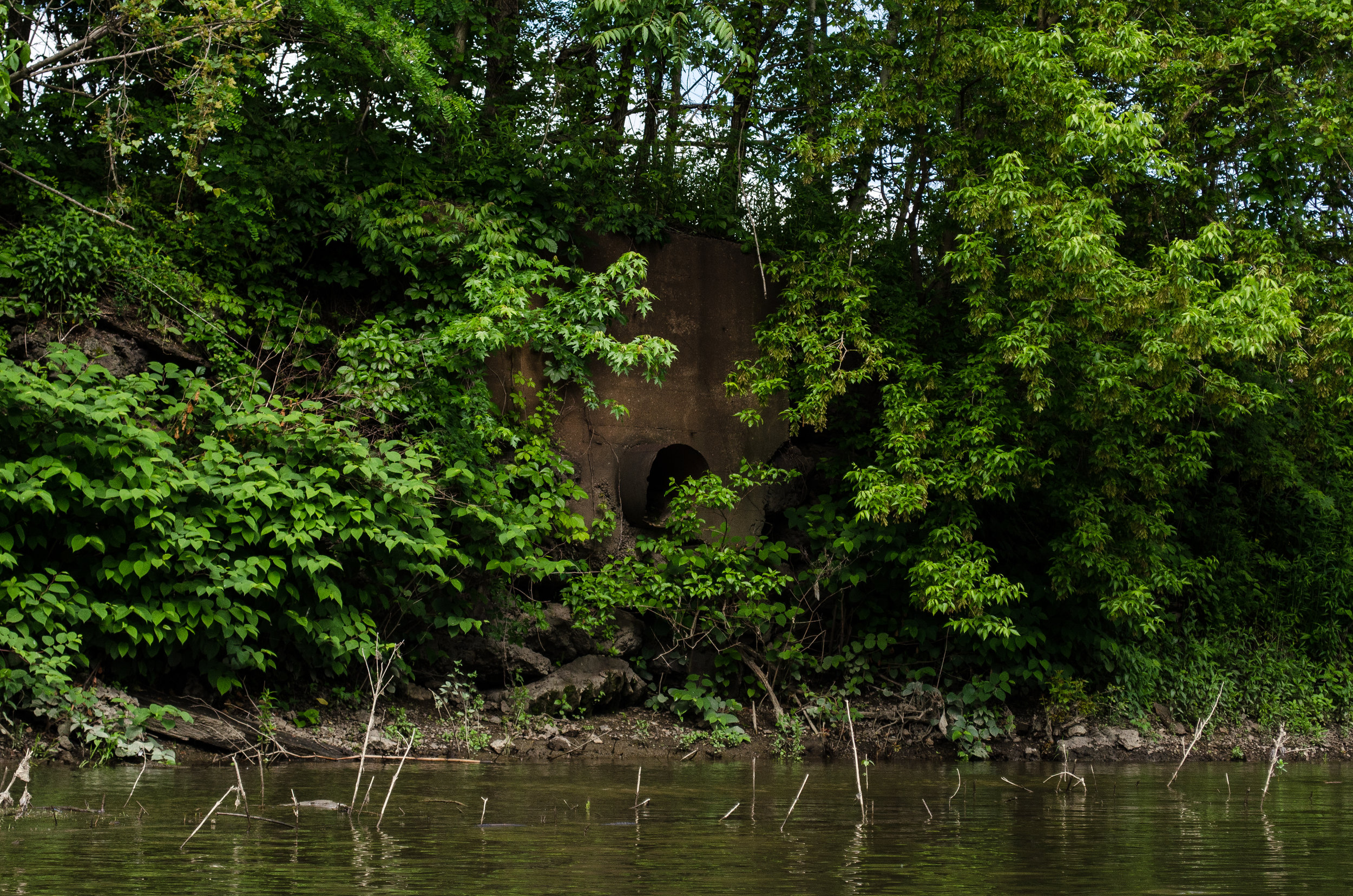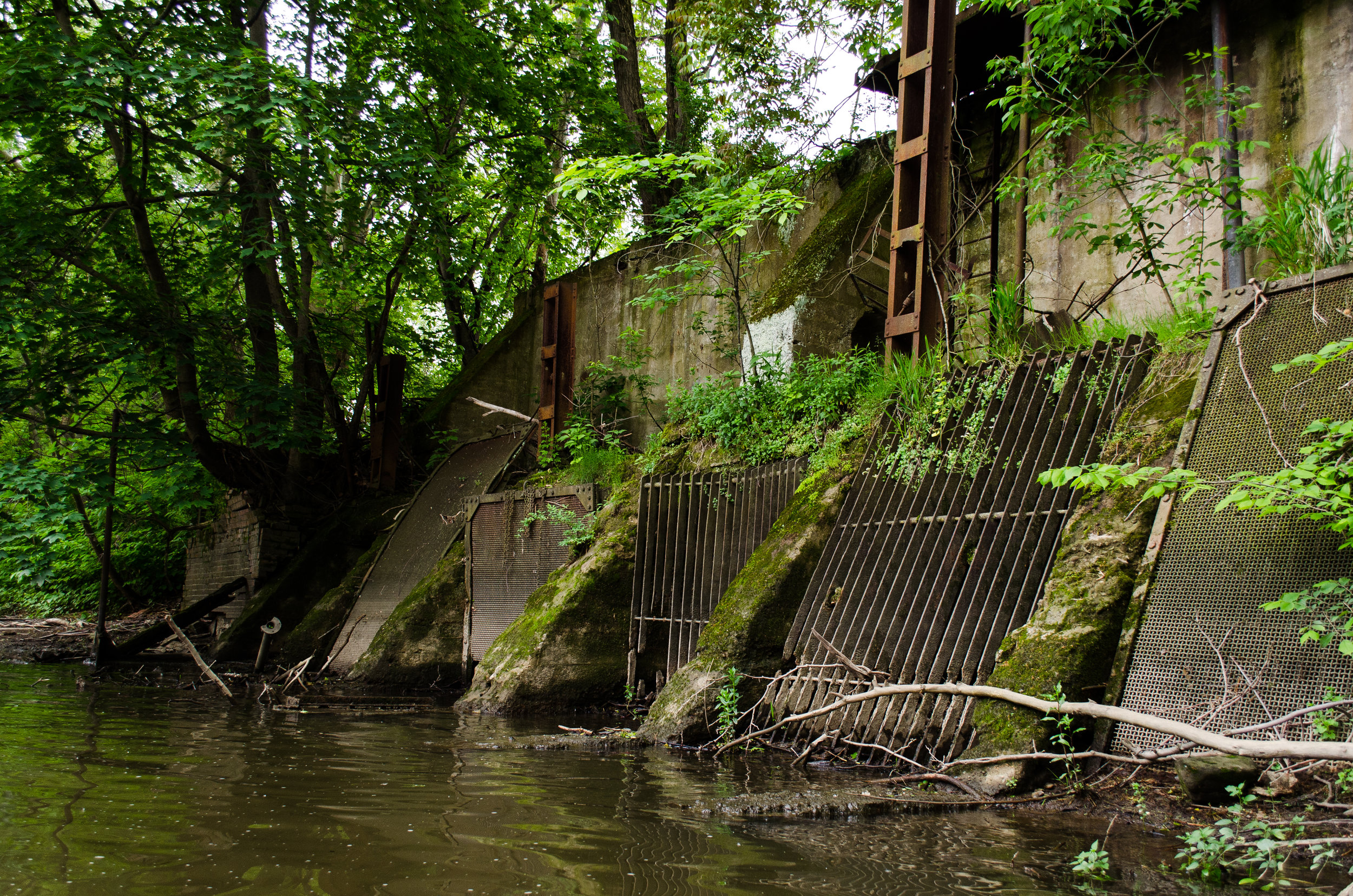Steel Valley, O. - The Mahoning River forms in Columbiana County and merges with the Shenango river just south of New Castle, PA to form the Beaver River.
This river served as the main artery for the miles and miles of steel mills that once lined the Mahoning. The mills used huge amounts of water for various purposes which was pumped in from the river, and eventually returned. Industrial waste and super heated water poured into the river for a century. The river did not freeze, even in the frigid north east Ohio winters, for decades. When the local steel industry began to collapse in the 70s and 80s the Mahoning finally began to freeze again, but even with the mills closed the river still showed the scars from the area's industrial past. The levels of heavy metals, PCBs and other contaminants made the Mahoning one of the most polluted in the United States.
There has always been a stigma around the river, people would say that there were three eyed fish that lived in it and that you would be poisoned if you swam in it. The river is cleaner now, it's safe to eat small amounts of the fish even, but people still made those comments when I told them I was going to 'yak the riv as they say.
Pollution or no pollution, I still wanted to explore the river to see the Steel Valley's industry from a vantage point that most people never have or will. Years ago, my cousin suggested we make a raft from 55 gallon drums and scrap lumber to float down the river, so I started doing a little research. I really wanted to float from Newton Falls, all down through Warren (WCI Steel was still in business then, it would have been something to pass between the blast fce. and BOF sides of the active mill), Niles, McDonald, Girard, Youngstown, Campbell, Struthers, Lowellville and New Castle through the remains of industry. I found a few river maps online, and saw that there were dams and obstructions that seemed like they could kill us all along the river so we tabled that idea.
Earlier this year I was contacted by Chuck Miller from the Mahoning River Paddling & Restoration Group who saw the story WFMJ TV21 did on this site. He was familiar with the river, how to kayak it safely, and offered to loan me a boat and take me from Youngstown to Lowellville. I let him know that hell yes I wanted to go.
We started just south of the abandoned steel truss bridge that was West Avenue when it still crossed the river. We paddled down past the B&O station, under the Peanut bridge and then the Marshall Street bridge. There were stretches of the Mahoning near that point that looked nothing like Youngstown, it was like being out in Cook's Forest. Very quiet, very beautiful. Peaceful. It's a shame the river has never been dredged and the dams have been left behind. If that happened it could be a terrific recreation area. I was there to see the dams though, there is something to be said about all of that industry being overtaken by nature.
The first industrial relic we came across was just past where the William Tod Co. / Wean United stood, south of the Market Street bridge. (No traces of the Tod Co. remained.) The Covelli Centre replaced Republic Steel, but the water intake still exisits. The same intake is pictured on this postcard and appears on this map dated 1884. Built to last in Youngstown.
Compare the postcard above to the modern photo below. The trees along the riverbank have really bounced back, not just here but all along the river; it was amazong kayaking throguh that tree canopy.
Across from where the Republic mill was I noticed what looked like a boxcar on the hill just down from the active railroad tracks. That is definitely a boxcar, or at least a mangled part of one. A CSX freight train happened to pass by as I was photographing this wreck and wondering how the hell it got there.
The next two photos are the remaining pier for what was Cedar Street when it used to cross the river, and a piece of 2" threaded rod that was growing out of the hillside just before the next Republic Steel mill we came across: the Hazelton works.
This pipe jutting out of the man made stacked stone retaining wall was the first indication that we were back in an industrial area. A bird was hanging around inside of that pipe, it flew out and startled the hell out of me. I missed the shot.
We were entering what was a a highly industrialized stretch of river, see the image from Youngstown, Ohio: Steel Valley Artifacts below. From this point down to Lowellville we passed places that employed relatives of mine. Youngstown Sheet & Tube (John D. Grilli, Dominick Grilli, Don Meenachan, Bob Grilli, John W. Grilli [via Industrial Mill Service]), J&L Steel/Cold Metal Products (Albert Grilli) who also drew water from the river all the way from the other side of YS&T, but I couldn't find their intake. Further down would have been Sharon Steel's Lowellville works (Mario Grilli and possibly Freddie Retort). These men that spent years here were on my mind the entire time.
Courtesy Youngstown, Ohio: Steel Valley Artifacts
Two monolithic Republic shed buildings, visible in the photo above, peek through the heavy tree cover on the banks of the river.
The bridge piers {L} and abutment {R} below. Per Rick Rowlands of Youngstown Steel Heritage: "Since it would connect the Republic track from Brown Bonnell to the operations at the other side of the river I would say that it was a Republic Steel bridge. Possibly the route by which hot metal got to the open hearth from the blast furnaces."
Below: A Republic Steel shed and a sand tower that I would say is 100' tall.
Below: Republic Steel Corp. intake. The river was a bit low that day so you were able to see the intake grates exposed at the bottom of this structure.
Below: A section of brick wall that I assume was pushed into the river during the demolition of the Republic Steel Hazelton works.
Below: Another Republic Steel rail bridge which is abandoned, and in the background standes the still active Norfolk Southern (formerly Pennsylvania Railroad) Youngstown line and yard office.
The next images are from the Youngstown Sheet & Tube Company's Campbell works, beginning with this image of a tree that has grown around several lengths of pipe. There were rail lines at the top of this bank that ran through the Sheet & Tube propoerty, I wonder if pipe spilled off of a train that was moving it around in the mill.
The photo below was taken from underneath of the shiny new Walton Street bridge, with a Sheet & Tube bridge in the background. The remaining bridge is very industrial in it's design, it features an expanded metal deck and large diameter pipes that ran across it. The really interesting item here is the abandoned bridge pier in the foreground.
This pier supported the original Walton Street bridge, which was the main entrance to Youngstown Sheet & Tube. There is a very Youngstown story behind the reason that bridge had to be replaced, one that involves a shot and a beer bar that steelworkers used to frequent right up Walton St.
I will leave names out of this, but here is the story of the Walton Street bridge and the Bloom Butt Inn as it was told to me: "When they cut the ends of a slab (bloom) off to get the right length for the order , it's called a bloom butt. Three guys on midnight shift pulled a scam where one guy ran a locomotive crane, one drove truck and the third guy did the hooking and unhooking. They would sell the butts as scrap in Pittsburgh. After a while they got lazy and started taking the butts to New Castle to sell as scrap. YS&T would periodically check scrap yards to see if anything came from them. YS&T found about $180,000.00 worth of receipts from just New Castle. They fired the three guys. One eventually bought the Walton bar and named it The Bloom Butt Inn. Don't know about one of the guys, but the locomotive driver got his job back after about a year. One day on day shift he was running late at the end of his shift and was rushing back to the shop in the loco crane and forgot to put the boom down. He hit the bridge that went to Walton street knocking it out of whack. The bridge was never able to be used after that. Men going into the mill from Walton street had to go down steps to ground level and take a round about way to get into the plant."
Below is a photo of the aformentioned bridge in the 80's when they were tearing down the Campbell works. She looks a little bit out of plumb.
Courtesy Sean Posey
I could not find any information on this Bloom Butt Inn online, but with today being the 40th anniversary of Black Monday (learn more about that here, and the impact it had on my family here and here ) there has been a lot of talk about Youngstown's steel industry in the media. I was watching a segment on the shutdowns on WKBN and sure as shit they cut from a shot of the mill to interviews of people at "a mill bar" they called it. The Bloom Butt Inn.
Courtesy WFMJ
I don't think stealing all that scrap was an ethical decision, but skimming off the top is as Youngstown as pierogies and homemade cavatels. Anyhow, enough with story time. The next image was the main water intake for Youngstown Sheet & Tube, located just southeast of where the blast furnaces once stood.
The remains of a massive dam that sat between the coke plant and blast furnaces. Per Rick Rowlands: "Dam to create cooling water pool for Campbell Works. A tramway that hauled coke in self propelled transfer cars ran over a trestle built on top of this dam."
Intake and pump house for the Youngstown Sheet & Tube Struthers works. The water pulled from this location was needed for the 9" and 12" bar mills (where my grandpa was a craneman) as well as the conduit plant and powerhouse.
Below are photos of the former Sharon Steel Corp.'s pump houses that served their Lowellville works. "Sharon Steel Lowellville Works pump house. Actually there are two pump houses. This one is the oldest of the two. It was replaced by the larger one next to it. This one might date back to the Ohio Iron & Steel Co. days"
The newer of the two (but still long forgotten) Sharon Steel pumphouse.
A nine mile trip down the Mahoning River revealed another side of our industrial heritage that needed to be documented, and I feel lucky to have been able to do that. These buildings will likely stand for years and years, there is more concrete than steel scrap, plus you would never know they were down there. Out of sight out of mind. I like to think I changed that.
Unless otherwise noted, all photos copyright Paul Grilli - The Rust Jungle 2017












